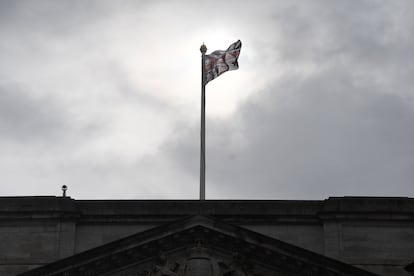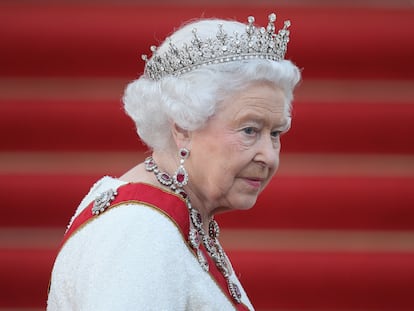Queen Elizabeth II dies at 96, Charles becomes King
Preparations for a monarch’s death are always kept secret, but the United Kingdom had been preparing for this occasion for decades

Queen Elizabeth II has passed away at the age of 96, after a 70-year-long reign. Her son Charles, the Prince of Wales – who turns 74 in November – has succeeded her on the British throne and will now be known as King Charles III.
Camilla – the wife of the new king since 2005 – has never used the title of Princess of Wales, instead presenting herself as the Duchess of Cornwall or the Duchess of Rothesay (in Scotland), two other titles that correspond to her by marriage.
For many years, there has been speculation about Camilla’s future, until Elizabeth II settled the matter earlier this year, on February 5th – her 70th anniversary on the throne – by stating that she expected Camilla to adopt the title of Queen upon her passing. However, a poll published at the time indicated that only 14% of British citizens agreed with this decision.
Preparations for the eventuality of the Queen’s death were kept secret, although the British government has spent decades preparing for the occasion. The death of the queen mother in 2000 and the death of the Duke of Edinburgh – the Queen’s husband – last year served as dress rehearsals for the death of Elizabeth II. These plans have been leaked on occasion – The Guardian published some in 2017 – and are regularly reviewed. As the Queen died at Balmoral Castle, in Scotland, the British press has speculated that it is most likely that the Queen will be mourned as the Queen of Scotland and will lie in state at the Palace of Holyrood, in Edinburgh. A state funeral will subsequently be held at St. Giles’ Cathedral.
Once this portion of the mourning process is complete, it is expected that the monarch will be transferred to London, where other tributes shall be paid to her. She will then be buried in the chapel of St. George in Windsor Castle, where her husband’s body will also be transferred.
Immediately after the death of a British monarch, an Accession Council is convened as soon as possible (usually within 24 hours) and meets at St James’s Palace in London, the British royal family’s traditional residence, to formally proclaim the new monarch.
The Council, which is expected to convene on Saturday as there was not enough time to do so on Friday, is chaired by the Lord President of the Council, who, in this case, is the newly-appointed Penny Mordaunt, the Leader of the House of Commons. Typically, several hundreds of people form the body of the Council, including, among others, the Prime Minister and several senior members of the government, as well as the Mayor of London and Commonwealth high commissioners (ambassadors of the 14 countries whose head of state is also the British monarch.)
Once the death of the monarch is certified, the second part of the Accession Council is held, with the Privy Council being convened. The Privy Council is made up of 719 members, almost all of whom are politicians (members of government and the opposition, retired and active), senior members of the Anglican Church and leading jurists. At this session, the King swears to uphold the Protestant profession of faith, as mandated by the Establishment Act of 1701. The proclamation is then read, first on the balcony of St James’s Palace, then at the Tower of London, as well as in Edinburgh, Cardiff and Belfast, the respective capitals of Scotland, Wales and Northern Ireland. The proclamation is also read aloud in the capitals of all Commonwealth countries.
All of these procedures should occur within the UK’s 12-day national mourning period. Preparations will then begin for the formal coronation of the new monarch, which can take place months after his accession to the throne (Elizabeth II’s happened 14 months later). At the coronation – which takes place in London’s Westminster Abbey – the new King will be anointed and crowned, followed by the traditional balcony scene at Buckingham Palace. Likewise, designs for banknotes, coins and postage stamps with the image of the new monarch will be released.
Tu suscripción se está usando en otro dispositivo
¿Quieres añadir otro usuario a tu suscripción?
Si continúas leyendo en este dispositivo, no se podrá leer en el otro.
FlechaTu suscripción se está usando en otro dispositivo y solo puedes acceder a EL PAÍS desde un dispositivo a la vez.
Si quieres compartir tu cuenta, cambia tu suscripción a la modalidad Premium, así podrás añadir otro usuario. Cada uno accederá con su propia cuenta de email, lo que os permitirá personalizar vuestra experiencia en EL PAÍS.
¿Tienes una suscripción de empresa? Accede aquí para contratar más cuentas.
En el caso de no saber quién está usando tu cuenta, te recomendamos cambiar tu contraseña aquí.
Si decides continuar compartiendo tu cuenta, este mensaje se mostrará en tu dispositivo y en el de la otra persona que está usando tu cuenta de forma indefinida, afectando a tu experiencia de lectura. Puedes consultar aquí los términos y condiciones de la suscripción digital.
More information
Últimas noticias
Most viewed
- Reinhard Genzel, Nobel laureate in physics: ‘One-minute videos will never give you the truth’
- Pablo Escobar’s hippos: A serious environmental problem, 40 years on
- Charles Dubouloz, mountaineering star, retires at 36 with a farewell tour inspired by Walter Bonatti
- Why we lost the habit of sleeping in two segments and how that changed our sense of time
- The Florida Keys tourist paradise is besieged by immigration agents: ‘We’ve never seen anything like this’









































